Election Insights: Analysis of the 2024 Local Government Elections Nominations
The nominations are in and the 2024 Local Government election campaign is now in full swing.
Significant changes to the local government sector means this election period is shaping up to be one of the most interesting since councilamalgamations in 1994. The shift to single member wards, a push towards 50/50 gender representation by 2025 and the local government culture review has the potential to shake up the sector in ways we have not seen before.
The Victorian Local Governance Association, with support from our colleagues at Gender Lens Australia, have completed a thorough analysis of the nomination data for the 2024 elections as provided by the Victorian Electoral Commission.
Here are some of the interesting insights we’ve found.
Total nominations
The 2024 Local Government Elections received a record number of nominations, with 2211 people raising their hand to run. 39.6% are women. 0.5% identify as non-binary.
Councillors re-standing
417 (67%) of current councillors are re-standing for election. 67% of current male councillors and 70% of current female councillors are re-contesting.
Are we going to reach the 50/50 gender representation target?
Basead on the current numbers, disappointingly it does not look like the goal of 50/50 gender representation in local government will be reached by the 2025 target date.
In total, 876 women are standing for election in 2024, short of the 1000 women standing target estimated to be required to reach gender parity in elected representatives.
Women make up 39% of the total number of nominations in 2024. In regional areas women make up 37%, and in metropolitan councils, 40% of candidates.
Looking at previous data, we estimate that should the trends continue this election, the number of women elected to council will remain around 44%.
On a positive note, the total number of women standing is a 2.9% increase from 2020.
Coming back from administration
With three councils returning to elected representation, it is pleasing to see a keen interest from those communities to put their hand up for election. Casey has the second largest number of nominations in the state, with 89 candidates nominating for election. Whittlesea has 57 candidates for 11 vacancies and Strathbogie 15 nominations for 7 positions on council.
Metro vs Regional
Interest has increased in regional and rural communities, making up 33% of total candidates. It is pleasing to see contested elections in Horsham and Northern Grampians – two communities who struggled to receive enough nominations for a competitive democratic process in recent years.
In metropolitan communities, more than 1400 people have nominated as a candidate. Wyndham City Council has the highest number of nominations, with 92 candidates for 11 positions.
Uncontested elections
There are 47 councillors who will be elected uncontested in 2024, up from 26 in 2020. 8 of these are in metropolitan councils and 39 in regional municipalities. Yarriambiack is the only council which does not need to hold an election, as the number of candidates matched the number of vacancies.
Candidates per vacancy
The change to single member wards has not seen a shortage of candidates, however metropolitan councils have a higher proportion of options to choose from.
Interface councils have on average 5.3 candidates per vacancy for their selection, compared to 1.8 for small rural shires.
.
The VLGA acknowledges the Traditional Owners of Country throughout Victoria and recognises their continuing connection to land, waters and community. We pay our respects to the Traditional Owners, their elders past, present and future, and to their cultures.
Disclaimer:
The advice provided by the VLGA is intended to be guidance only. It is not a substitute for legal or formal advice from relevant regulatory bodies.
© Victorian Local Governance Association 2023




